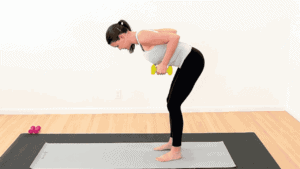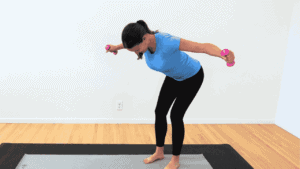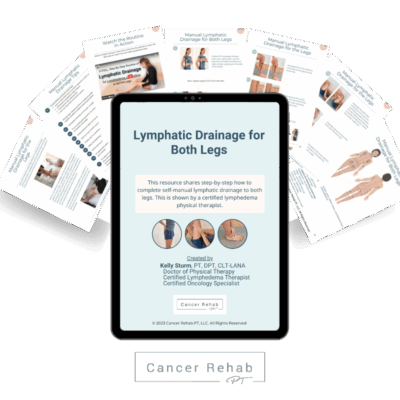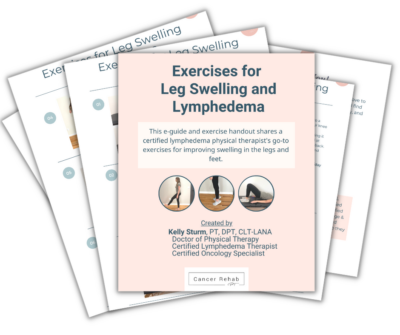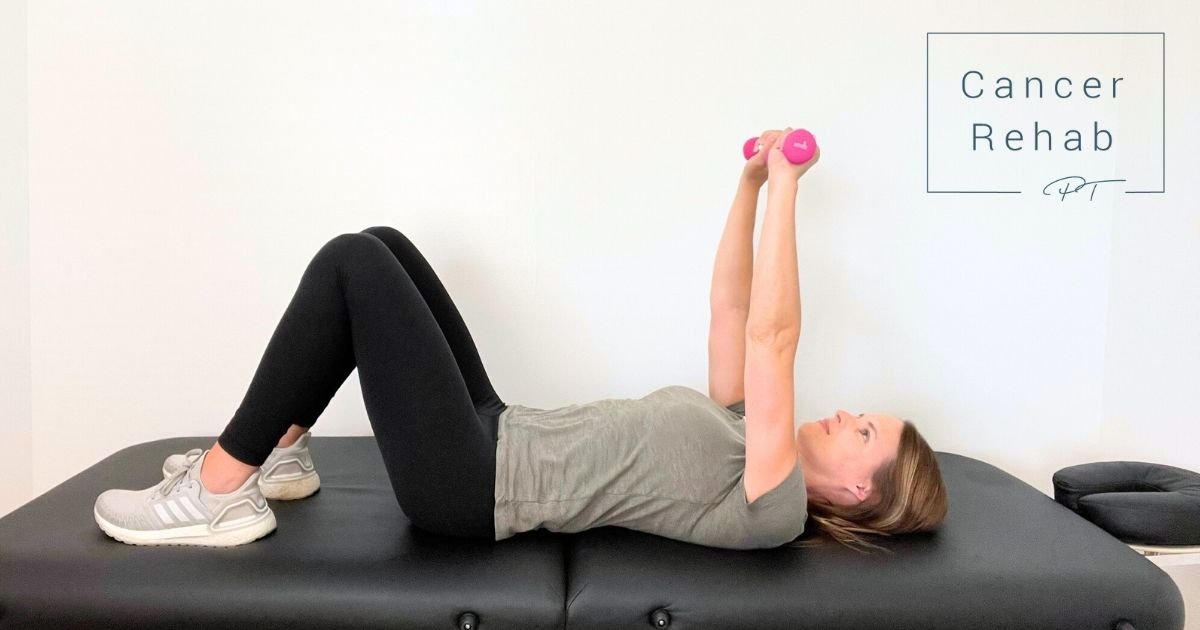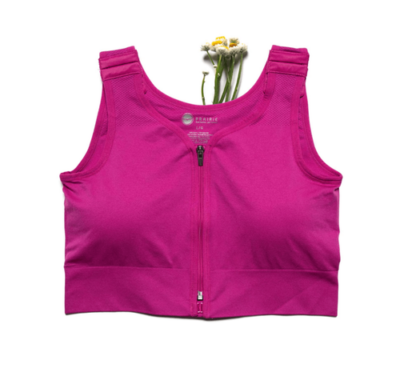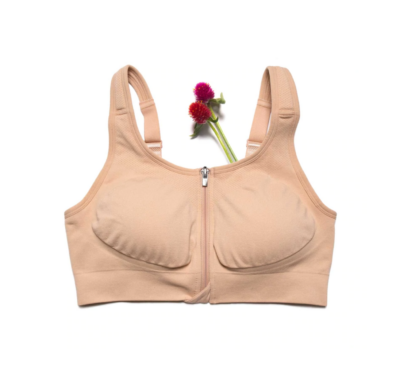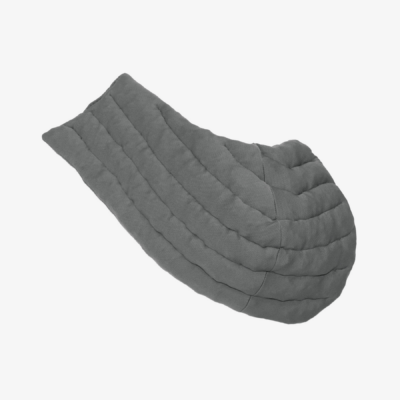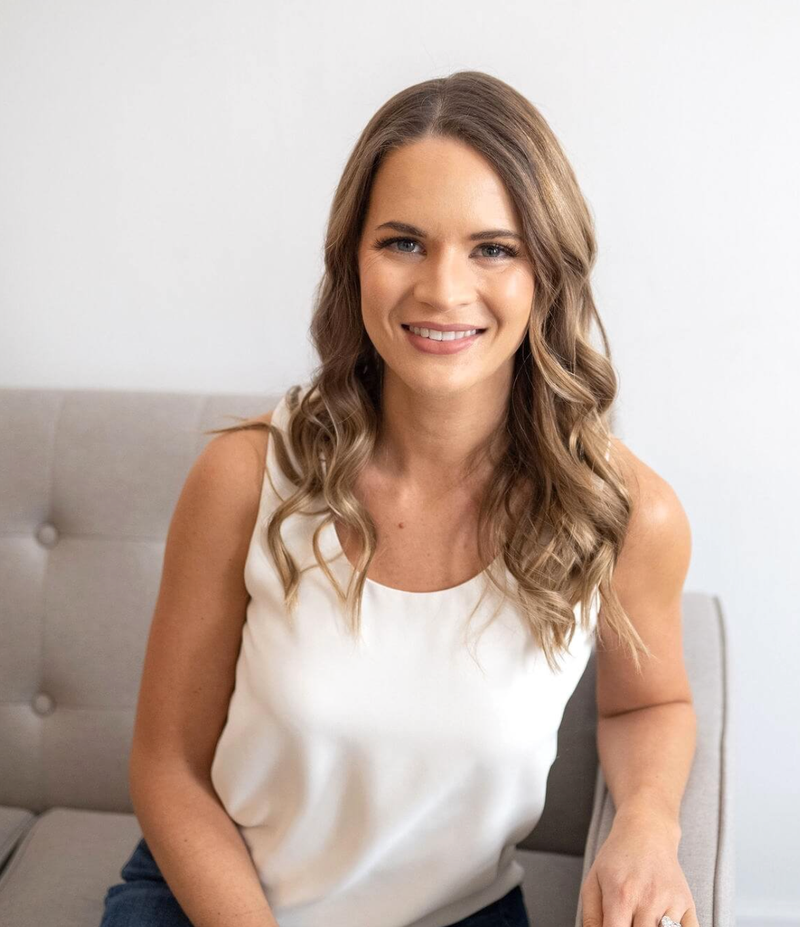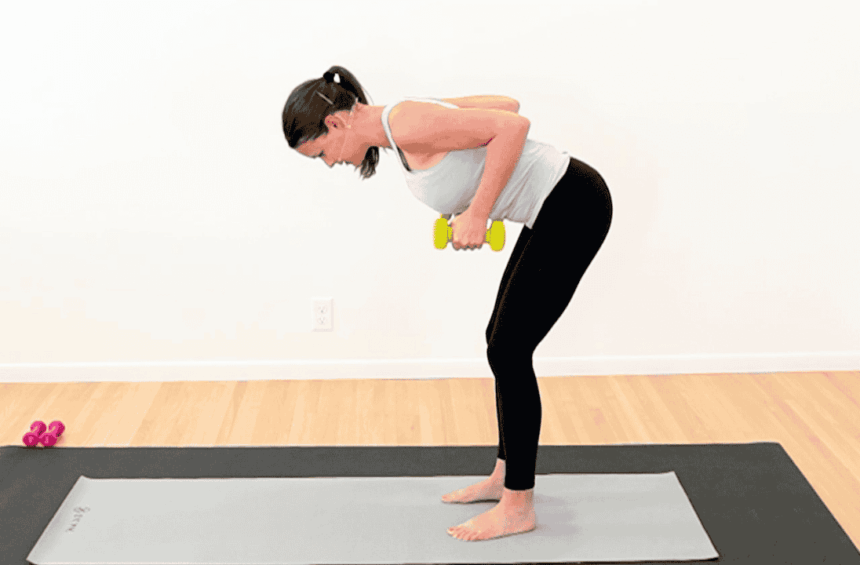Breast lymphedema is, unfortunately, a common consequence of breast cancer treatment. It causes uncomfortable swelling in the chest area.
Lymphedema is a chronic condition, but you can significantly improve your quality of life with the right exercises for breast lymphedema and care. In the early stages, it’s sometimes possible to reverse the swelling.
As a Certified Lymphedema Therapist and Doctor of Physical Therapy, I often see people who assume that they’re just going to have to learn how to live with the discomfort. That is not true.
Physical activity, together with other effective ways to manage breast lymphedema, can help your lymphatic system become better at eliminating excess lymph fluid.
To help you get started, I’ll share 6 exercises for breast lymphedema that you can do at home with minimal equipment!
What Is Breast Lymphedema?
Breast lymphedema is a condition that causes excess fluid to build up in the breast tissue.
This happens when the lymphatic system, which helps remove waste from the body, is damaged or blocked. The result is swelling in the breast area, which can cause discomfort, tightness, and changes in the breast’s shape or size.
Breast lymphedema often develops after breast cancer treatments like surgery or radiation therapy.
These treatments can damage the lymph nodes and vessels in the breast and armpit area. When this happens, it becomes harder for the lymphatic system to do its job properly. So, there’s an accumulation of excess fluid.
Breast cancer-related lymphedema can develop soon after treatment or even years later. Lymphedema is a common condition, affecting as many as 140 million to 250 million people worldwide1.
Early detection and management are key to preventing long-term complications. Breast lymphedema is something that you should pay close attention to during your rehabilitation and beyond.
Breast Lymphedema Risk Factors
There are a few risk factors for developing lymphedema in your chest.
- Breast cancer surgery: Invasive breast surgery, especially if lymph nodes are removed, is a major risk factor (ex: axillary lymph node dissection, sentinel lymph node biopsy, etc.).
- Extent of lymph node removal: The more lymph nodes removed during surgery, the higher the risk.
- Radiation therapy: This treatment kills cancer cells but can also damage lymphatic vessels and nodes.
- Obesity: Excess body weight puts additional stress on the lymphatic system.
- Infections and injury: Infections like cellulitis and trauma to the breast area can increase the risk of developing lymphedema.
Some cases of lymphedema can be prevented. In its early stages, the condition is also sometimes reversible. So, it’s important to be aware of the risk factors and take steps to minimize your chances of developing lymphedema.
Learn more about preventing lymphedema.
Managing Breast Lymphedema
Physical exercise is one of the best ways to manage breast lymphedema. Regular and gentle exercises stimulate lymph flow, reduce swelling, and make it easier to move your arms and shoulders.
Exercise helps because it acts as a natural pump for your lymphatic system.
Your lymphatic system uses muscle contractions to move lymph fluid through your body. When you exercise, your muscles contract. This creates a “pumping action” that pushes lymph fluid out of the affected arm and chest area.
An exercise program is important, but more approaches go into managing breast lymphedema. Wearing compression garments, lymphatic drainage massage, and proper skin care are all effective ways to reduce swelling.
Breast Cancer Rehab is a comprehensive and affordable program to help you learn how to effectively manage lymphedema and stop feeling limitations and discomfort as your new normal.

6 Exercises for Breast Lymphedema (From a Doctor of Physical Therapy)
1. Shoulder Rolls
How to do it:
- Sit or stand upright.
- Roll your shoulders up and forward, bringing them towards your ears.
- Then roll them down and back to the starting position.
- Repeat in the opposite direction.
Frequency: 10-15 repetitions, 2-3 sets, 1-2 times per day
2. Shoulder Raises

How to do it:
- Sit or stand upright with thumbs facing up.
- Raise your straight arms to shoulder or head height in front of you.
- Lower back down slowly.
- Raise your arms out to the sides to shoulder or head height.
- Lower back down slowly.
- Repeat the exercise.
Frequency: 10-15 repetitions, 2-3 sets, 1-2 times per day
3. Bicep Curl
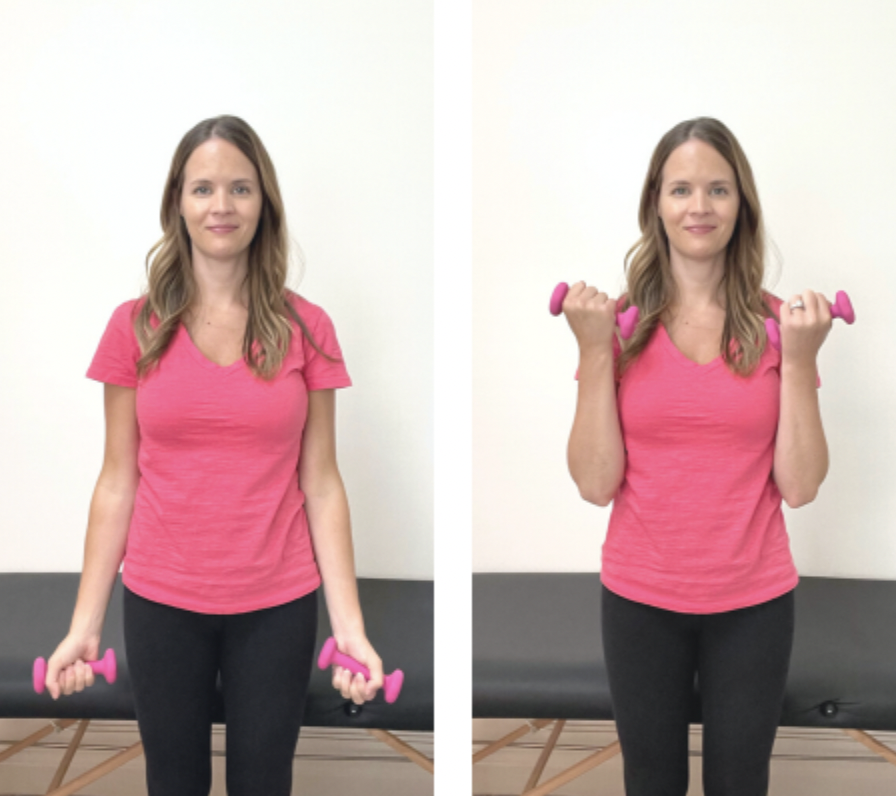
How to do it:
- Stand holding a light dumbbell in each hand, palms facing up.
- Slowly raise the dumbbells to your shoulders, bending at your elbows.
- Lower them back down slowly.
- Repeat.
Frequency: 10-15 repetitions, 2-3 sets, 1-2 times per day
4. Ball Squeeze

How to do it:
- Sit or stand upright.
- Hold onto a small ball or rolled towel.
- Gently squeeze the ball or towel.
- Hold for 1-5 seconds.
- Relax and repeat.
Frequency: 10-15 repetitions, 2-3 sets, 1-2 times per day
5. Wall Push Up
How to do it:
- Stand arm’s length from a wall with your hands at shoulder height.
- Bend your elbows to lean towards the wall.
- Push yourself away from the wall.
- Repeat.
- Keep your elbows near your sides and your body straight.
- This can also be done using a countertop.
Frequency: 10-15 repetitions, 2-3 sets, 1-2 times per day
6. Chest Press
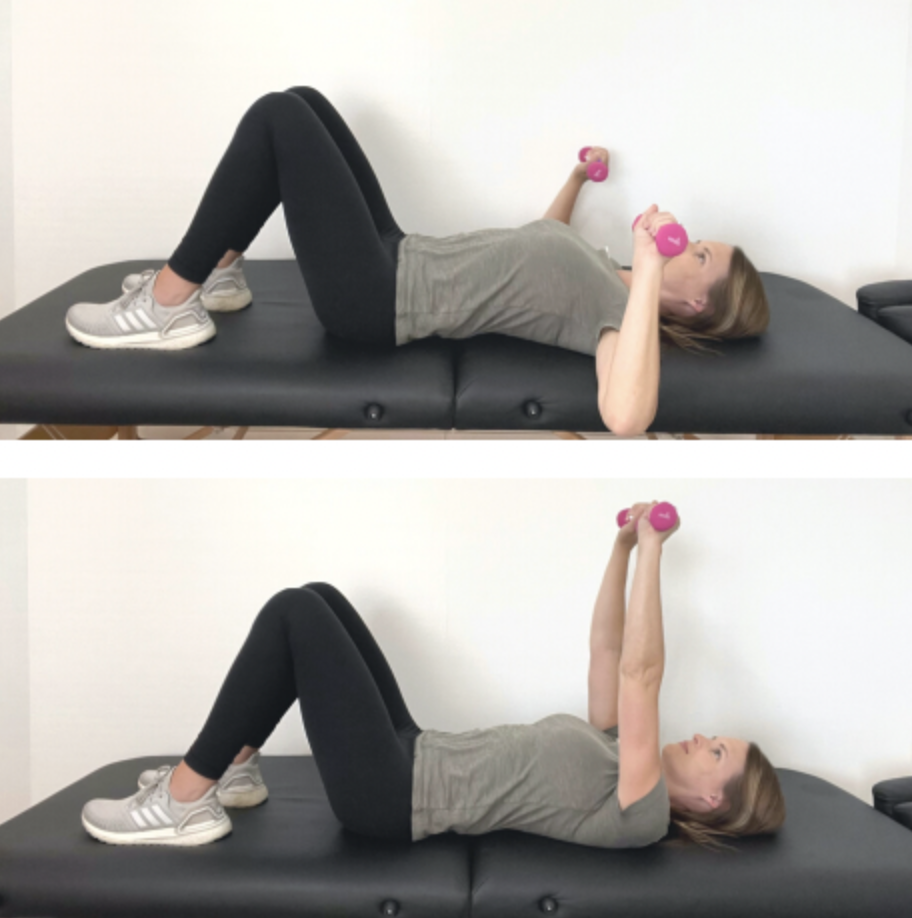
How to do it:
- Lie on your back with a dumbbell in each hand.
- Bend your arms to 90 degrees out to your sides.
- Press the dumbbells toward the ceiling, straightening your elbows.
- Slowly lower back down.
- Repeat.
Frequency: 10-15 repetitions, 2-3 sets, 1-2 times per day
Want to Get More Exercises for Breast Lymphedema?
You can get more exercises in my printable Exercises for Arm and Chest Swelling and Lymphedema Guide. It’s perfect for working out at home with minimal equipment!

Compression Garments and Breast Lymphedema
Wearing a compression bra during exercise can make your routine more effective. These special garments add gentle pressure that helps increase lymphatic flow and reduce swelling.
There are many compression garments for breast lymphedema out there, but Prairie Wear is one of my favorite brands. They have front-closure bras that are full coverage without wiring.
I have affiliate links that’ll get you 10% off your purchase. I receive affiliate income when you use my discount code, but I wouldn’t recommend products that aren’t truly high quality!
Browse my recommended compression garments + get 10% off using the code CANCERREHABPT
More Ways to Manage Breast Lymphedema
If you have breast lymphedema, your medical provider will typically recommend you go through Complete Decongestive Therapy (CDT). This treatment combines different techniques to reduce swelling and improve lymphatic function.
CDT usually includes:
- Manual Lymphatic Drainage (MLD): A special massage technique that stimulates lymph flow.
- Compression therapy: Using bandages or garments to reduce swelling.
- Exercise: A physical therapist can come up with an exercise program to help lymphatic fluid move.
- Skincare: This is important to prevent infections.
After completing CDT with a therapist, you’ll transition to lymphedema self-care. You’ll continue using the techniques you learned to reduce swelling, but now at home.
This can look like:
- Lymphatic drainage massage
- Wearing compression garments
- Doing your physical therapy exercises
- Taking care of your skin
- Looking for changes in swelling
Managing breast lymphedema is an ongoing process, but building a consistent routine goes a long way.
I share techniques and exercises for managing breast cancer-related lymphedema in my program Breast Cancer Rehab.
FAQs
How can I improve my lymphatic drainage in my breast?
To improve lymphatic drainage in your breast, try doing regular targeted exercise and wearing compression garments. If you have breast lymphedema, you should go through a Complete Decongestive Therapy (CDT) treatment and then practice lymphedema self-care at home. This typically includes Manual Lymphatic Drainage (MLD) massage, regular exercise, compression therapy, skincare, and more.
How can I reduce my breast lymphedema?
Breast lymphedema is a chronic condition, but regular physical exercise is one of the best ways to reduce swelling and discomfort. When you exercise, your muscles contract and relax. This creates a “pumping action” that helps push excess lymph fluid out.
In addition to exercise, techniques like Manual Lymphatic Drainage (MLD) and wearing a compression sleeve or garment can be very helpful, too.
What makes breast lymphedema worse?
There are a few things that can make breast lymphedema worse, and many people have their own unique triggers. It’s important to take note of the things that make lymphedema flare up for you. Generally speaking, inactivity, excess weight, and infections can all make swelling worse. Tight clothing (including bra wires) can also make symptoms worse.
Keep in mind that special compression garments are NOT the same as regular clothing! Compression garments are designed to add beneficial and gentle pressure to the area affected by lymphedema. Tight clothing restricts lymph flow incorrectly, which can increase swelling.
What exercises are good for chest lymphedema?
If you have breast lymphedema, you should try doing exercises that engage the chest and arm muscles. Shoulder rolls, shoulder raises, bicep curls, ball squeezes, wall push-ups, and chest presses are all great choices.
Remember to start slowly and gradually increase your activity level, especially when in breast cancer recovery. The most important thing is to stay consistent.
Get More Support in Breast Cancer Rehab
Unfortunately, lymphedema is a common side effect of breast cancer surgery and radiation therapy. About 1 in 5 people2 (20%) develop lymphedema (typically, of the arm or breast) after breast cancer treatment.
If you start developing swelling in your chest area or arms, get in touch with your medical provider as soon as possible. Detecting lymphedema early can help minimize or even naturally reverse the swelling. Without treatment, lymphedema can often get worse.
If you’re looking for proven techniques and exercises to manage breast cancer-related lymphedema, learn more about Breast Cancer Rehab.
You’ll get support with:
- Breast swelling/lymphedema
- Arm lymphedema
- Axillary Web Syndrome (cording)
- Arm mobility after surgery
- Scar tissue
- Radiation therapy rehabilitation
Lymphedema is common, but it doesn’t mean that it has to be normal for you.

